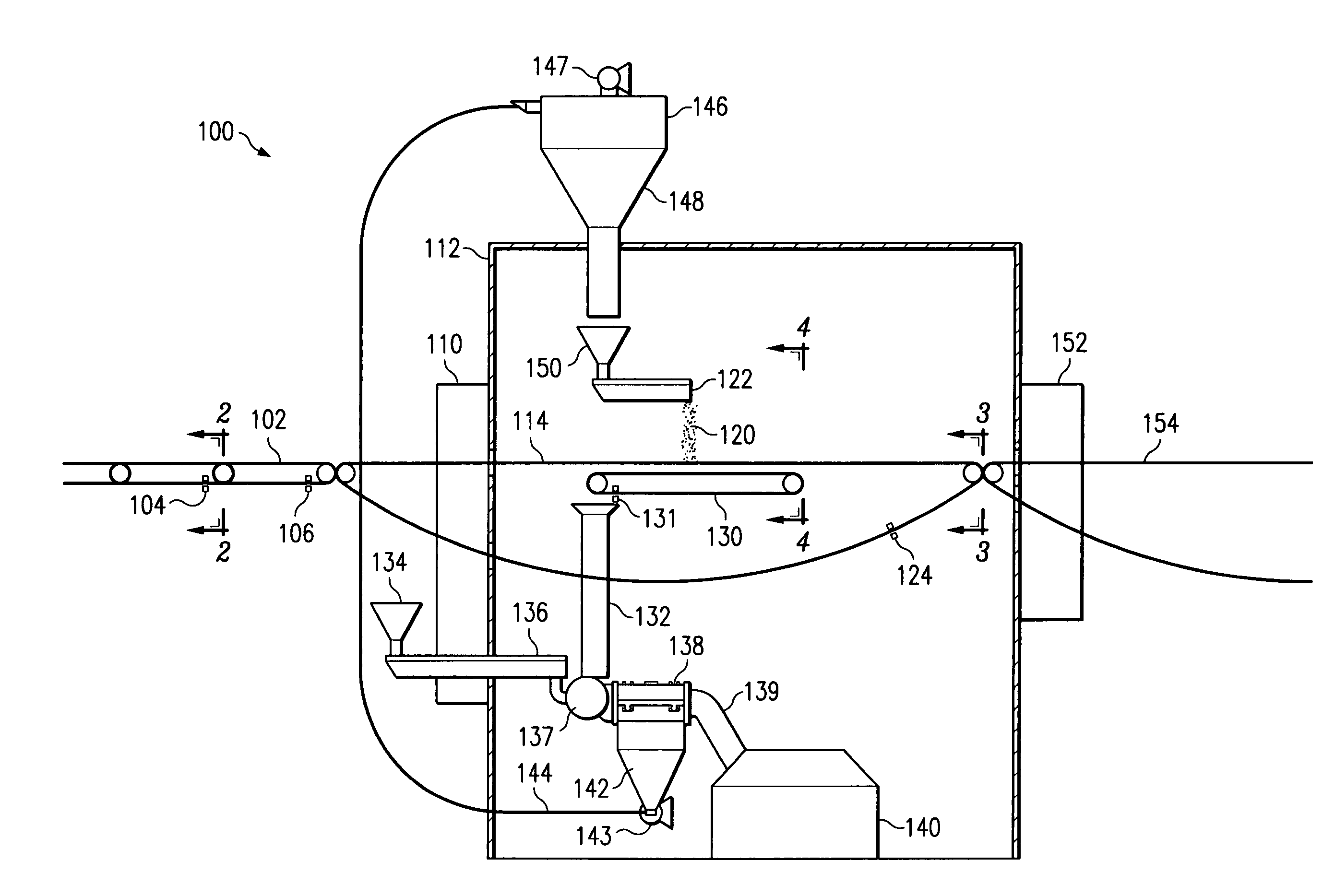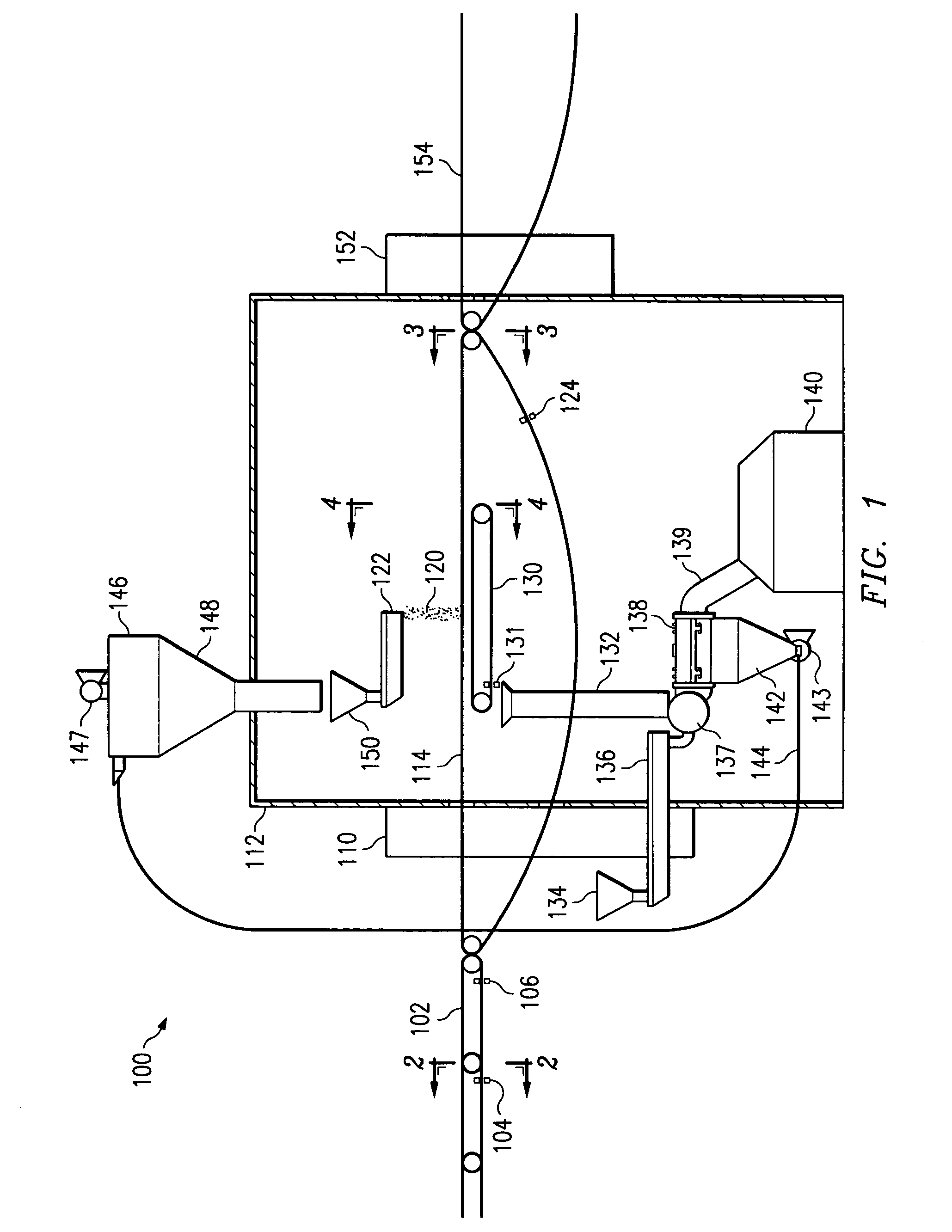Seasoning recovery and recycle
a technology of seasoning and recycling, applied in the field of seasoning recovery and recycling, can solve the problems of impracticality of randomizing seasoning techniques such as the rotating drum, hygroscopic seasoning and readily absorbing oil,
- Summary
- Abstract
- Description
- Claims
- Application Information
AI Technical Summary
Benefits of technology
Problems solved by technology
Method used
Image
Examples
Embodiment Construction
[0028]A seasoning recovery and recycle apparatus and process in accordance with an exemplary embodiment of the invention generally reclaims seasoning that is not retained by snack chips. Further, the apparatus and procedure described herein is unlike others in that it can recover difficult seasonings that easily clumps or otherwise degrades. Commonly, snack chip products, such as potato chips, corn chips, tortilla chips, or the like, are seasoned with salt and other flavorings prior to being packaged for sale to consumers. With the apparatus and process described herein, the residual seasoning is collected and purified for reapplication onto snack chips.
[0029]FIG. 1 shows a schematic representation of the invention wherein applied seasoning that does not adhere to snack chips is reclaimed for reapplication. The seasoning system 100 shown comprises an example of an assembly for seasoning snack chips, particularly potato chips, having generally three sections. The first section is a p...
PUM
 Login to View More
Login to View More Abstract
Description
Claims
Application Information
 Login to View More
Login to View More - R&D
- Intellectual Property
- Life Sciences
- Materials
- Tech Scout
- Unparalleled Data Quality
- Higher Quality Content
- 60% Fewer Hallucinations
Browse by: Latest US Patents, China's latest patents, Technical Efficacy Thesaurus, Application Domain, Technology Topic, Popular Technical Reports.
© 2025 PatSnap. All rights reserved.Legal|Privacy policy|Modern Slavery Act Transparency Statement|Sitemap|About US| Contact US: help@patsnap.com



